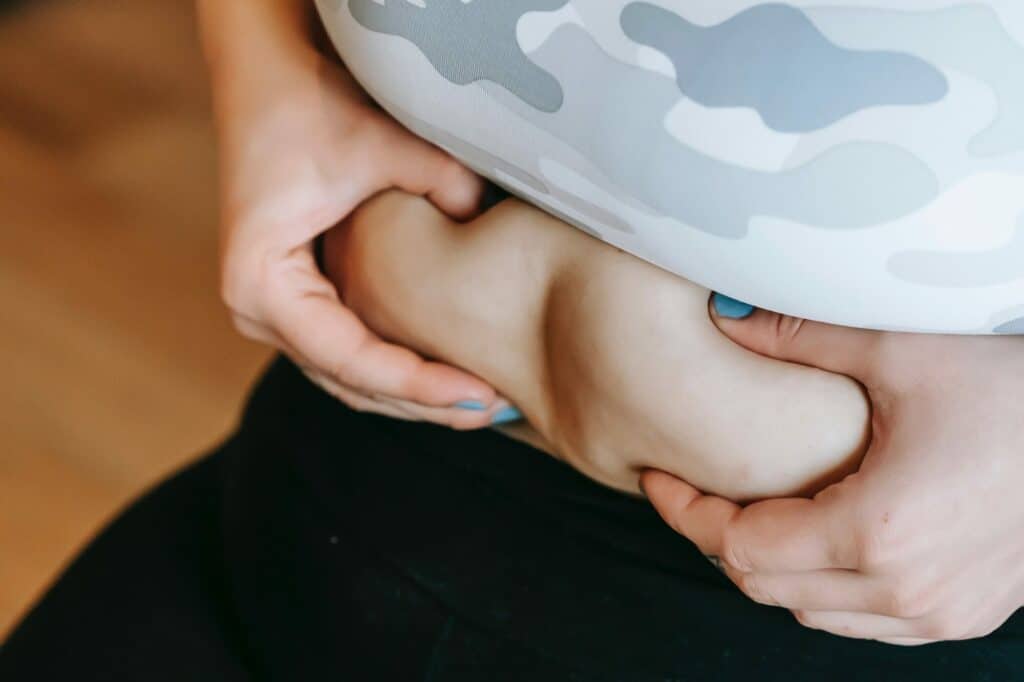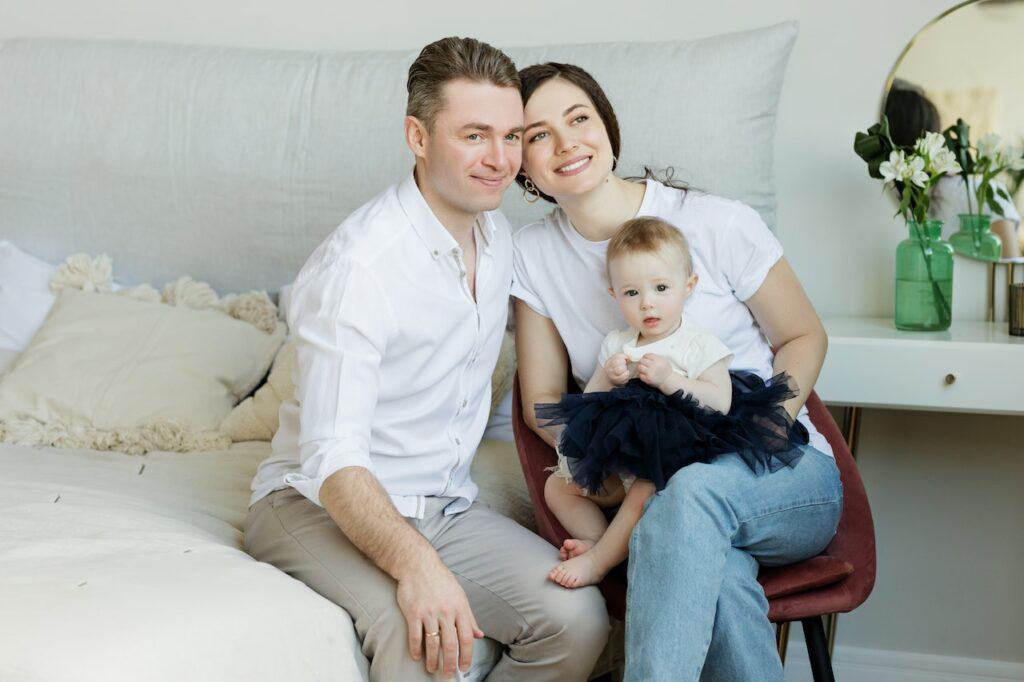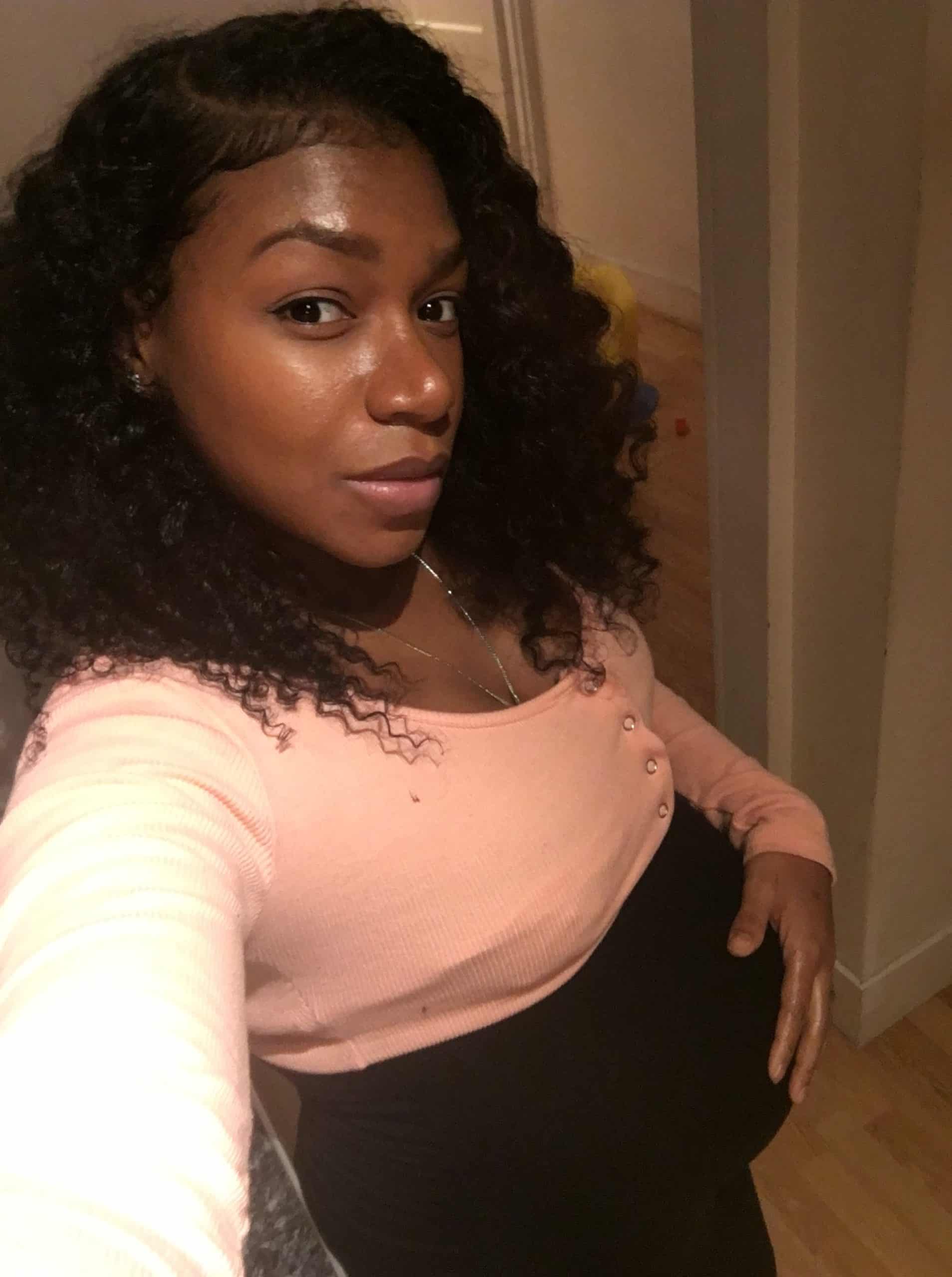Pregnancy and childbirth can be one of the most beautiful and fulfilling experiences in a woman’s life. However, it can also leave behind physical changes that may be difficult to deal with, such as a hanging belly after a c-section. Many women struggle to regain their pre-pregnancy body shape, especially in the abdominal area, and it can be frustrating and demotivating.
Understanding the causes of hanging belly after a c-section is crucial in finding effective ways to get rid of it. The abdominal muscles and skin are stretched during pregnancy, and the incision made during a c-section can further weaken the abdominal wall. This can result in a separation of the abdominal muscles and excess fat and skin in the lower abdomen. However, with the right approach, it is possible to improve the appearance of the hanging belly and regain confidence in your body.
Key Takeaways
- Hanging belly after a c-section is a common issue that many women face postpartum.
- Understanding the causes of the hanging belly is important in finding effective ways to address it.
- With the right approach, including a combination of exercise, nutrition, and self-care, it is possible to improve the appearance of the hanging belly and regain confidence in your body.
Understanding Hanging Belly After C-Section
After a C-section delivery, it is common for women to experience a hanging belly or “mommy pooch.” This is due to a combination of factors, including the stretching of the abdominal wall and skin during pregnancy, the incision made during the C-section surgery, and the postpartum recovery process.
The C-section scar is a visible reminder of the major surgery that was performed to deliver the baby. This scar can sometimes contribute to the appearance of a hanging belly, as the skin and abdominal wall may be stretched or weakened in the area surrounding the scar.
In addition to the scar, the uterus also plays a role in the appearance of a hanging belly. During pregnancy, the uterus expands to accommodate the growing baby. After delivery, the uterus slowly contracts back to its pre-pregnancy size, but this process can take several weeks or even months. As the uterus shrinks, it can leave excess skin and stretched abdominal muscles behind, contributing to the appearance of a hanging belly.
Another factor that can contribute to a hanging belly is diastasis recti, a condition in which the abdominal muscles separate during pregnancy. This can cause the belly to protrude and contribute to a “mommy pooch” appearance.
Overall, a hanging belly after a C-section is a common concern for many women. While some may opt for a tummy tuck or other cosmetic procedure to address excess skin and abdominal wall issues, others may find that exercise and a healthy diet can help improve the appearance of their belly overhang.
Physical Changes and Challenges Postpartum
After giving birth via C-section, many women experience physical changes that can be challenging to deal with. These changes can include weight gain, body fat, excess skin, and abdominal muscles that have been stretched and weakened during pregnancy. Additionally, hormonal changes and scar tissue from the surgery can also impact the body’s recovery.
One common issue that many women face is the development of an “apron belly” or “mommy tummy.” This occurs when excess skin and fat hang down over the C-section scar, creating a bulge that can be difficult to eliminate through diet and exercise alone. It’s important to note that this is a normal part of the postpartum recovery process and is not a sign of failure or lack of effort.
Breastfeeding can also impact the body’s recovery after a C-section. While breastfeeding can help with weight loss and promote bonding between mother and baby, it can also lead to increased hunger and cravings for high-calorie foods. This can make it more challenging to lose weight and regain muscle tone in the abdominal area.
Despite these challenges, there are steps that women can take to address their postpartum belly and promote overall health and wellness. These steps may include:
- Eating a healthy, balanced diet that is rich in nutrients and low in processed foods and sugar
- Engaging in regular exercise, such as walking, yoga, or strength training
- Seeking support from a healthcare provider or postpartum support group
- Considering cosmetic procedures, such as a tummy tuck or liposuction, if desired and appropriate
It’s important to remember that every woman’s postpartum journey is unique, and there is no one-size-fits-all solution for getting rid of a hanging belly after a C-section. With patience, persistence, and a focus on overall health and wellness, women can take steps to feel confident and comfortable in their postpartum bodies.
Nutrition for Postpartum Recovery
Proper nutrition is essential for postpartum recovery, especially if you want to get rid of your hanging belly after a C-section. A healthy diet that includes all the necessary nutrients can help you heal faster, boost your energy levels, and promote weight loss. Here are some tips to help you make the right food choices:

- Focus on a healthy diet: Eating a healthy diet is crucial for postpartum recovery. This means consuming a variety of foods from all the food groups, including vegetables, fruits, whole grains, lean proteins, and healthy fats. Avoid processed foods, sugary foods, and junk food as much as possible.
- Increase your protein intake: Protein is essential for tissue repair and recovery. Include lean proteins such as chicken, fish, eggs, and legumes in your diet. You can also consider adding protein supplements.
- Drink plenty of water: Staying hydrated is important for postpartum recovery. Drink at least 8-10 glasses of water a day to keep your body hydrated and help flush out toxins.
- Eat more vegetables and whole grains: Vegetables and whole grains are rich in fiber, vitamins, and minerals, which are essential for postpartum recovery. Aim to consume at least 5 servings of fruits and vegetables per day and choose whole grains over refined grains.
- Watch your calorie intake: While it’s important to consume enough calories to support your recovery, overeating can lead to weight gain. Keep track of your calorie intake and make sure you’re not consuming more calories than you need.
In summary, following a healthy diet that includes plenty of vegetables, whole grains, lean proteins, and healthy fats can help you recover faster and get rid of your hanging belly after a C-section. Drinking plenty of water, watching your calorie intake, and avoiding processed foods, sugary foods, and junk food can also help you achieve your postpartum recovery goals.
Exercise and Physical Activity
Regular physical activity is one of the most effective ways to tone your muscles and get rid of excess belly fat after a c-section. Exercise can help you strengthen your abdominal muscles and improve your overall fitness level. Here are some exercises and physical activities that can help you achieve your fitness goals:
- Cardiovascular exercises: These exercises can help you burn calories and lose weight. Some examples of cardio exercises that you can do include walking, jogging, cycling, swimming, and dancing.
- Abdominal exercises: These exercises can help you strengthen your abdominal muscles and tone your tummy. Some examples of abdominal exercises that you can do include crunches, planks, and sit-ups.
- Stretches: Stretching can help you improve your flexibility and reduce the risk of injury. Some examples of stretches that you can do include hamstring stretches, hip flexor stretches, and lower back stretches.
- Yoga: Yoga can help you improve your flexibility, strength, and balance. Some yoga poses that can help you tone your tummy include the plank pose, the boat pose, and the bridge pose.
- Physical activities with a stroller: If you have a baby, you can incorporate physical activity into your daily routine by taking your baby for a walk or a jog in a stroller.
When it comes to exercise, it’s important to start slowly and gradually increase the intensity and duration of your workouts. You should also consult with your doctor before starting any new exercise routine, especially if you’ve had a c-section recently.
Non-Exercise Activity Thermogenesis (NEAT)
Non-Exercise Activity Thermogenesis (NEAT) is a term used to describe the energy expended during activities of daily living that are not considered exercise. NEAT includes activities like standing, walking, and fidgeting. These activities can increase energy expenditure and contribute to weight loss.
NEAT can be particularly helpful for women who have had a C-section and are looking to get rid of their hanging belly. After a C-section, it can be difficult to engage in intense exercise due to the recovery process. However, incorporating NEAT into daily life can help boost metabolism and burn calories.
One way to increase NEAT is to stand more throughout the day. Standing burns more calories than sitting and can help improve posture. Additionally, taking short walks throughout the day can also increase NEAT and help burn calories.
Fidgeting is another way to increase NEAT. Simple movements like tapping your foot or shaking your leg can help burn extra calories throughout the day. Additionally, incorporating small movements like shoulder shrugs or calf raises while sitting can also help increase NEAT.
Overall, incorporating NEAT into daily life can be a simple and effective way to boost metabolism and burn calories after a C-section.
Compression and Massage Techniques
Compression and massage techniques are effective in reducing swelling and inflammation in the belly area, which can help to reduce the appearance of a hanging belly after a c-section. Here are some techniques that can be used:

Belly Bands
Belly bands are tight bands that wrap around the belly, compressing the area and providing support to the core muscles. They can be worn for several hours a day and can help to reduce the appearance of a stomach overhang. There are many different types of belly bands available, so it is important to choose one that fits properly and provides the right amount of compression.
Compression Garments
Compression garments are similar to belly bands but are designed to cover a larger area of the body, such as the hips and thighs. They can help to reduce swelling and inflammation in the belly area and provide support to the core muscles. Compression garments can be worn for several hours a day and can be especially helpful in the early weeks after a c-section.
Postpartum Massage
Postpartum massage can help to reduce swelling and inflammation in the belly area and improve circulation. It can also help to break up scar tissue and adhesions that may be contributing to a hanging belly. A trained massage therapist can use a variety of techniques to target the belly area and provide relief.
Overall, compression and massage techniques can be effective in reducing the appearance of a hanging belly after a c-section. It is important to choose the right type of compression garment or belly band and to work with a trained massage therapist to ensure that the techniques are being used safely and effectively.
Mental Health and Stress Management
Recovering from a C-section can be a stressful experience for many women. The physical trauma of the surgery can take a toll on the body, and the emotional stress of caring for a newborn can be overwhelming. This stress can have a negative impact on mental health, making it important to prioritize stress management and mental health during the recovery process.
One effective way to manage stress is through relaxation techniques such as deep breathing, meditation, or yoga. These techniques can help reduce anxiety and promote feelings of calmness and relaxation. Women can also try to engage in activities they enjoy, such as reading, listening to music, or taking a relaxing bath.
It is also important to have a support system in place during this time. This may include family members, friends, or a support group where women can share their experiences and receive emotional support. Talking to a mental health professional can also be helpful for women experiencing depression, anxiety, or other mental health concerns.
In addition to these strategies, women should also prioritize self-care during the recovery process. This may include getting enough sleep, eating a healthy diet, and engaging in regular physical activity when cleared by a healthcare provider. Taking care of oneself can help improve mental health and overall well-being.
Overall, managing stress and prioritizing mental health during the recovery process can be key to successfully getting rid of a hanging belly after a C-section. By taking care of oneself and seeking support when needed, women can improve their physical and mental health and feel more confident and comfortable in their bodies.
Patience and Consistency in Postpartum Recovery
Patience and consistency are key factors in postpartum recovery, especially when it comes to getting rid of a hanging belly after C-section. It is important to remember that the recovery period varies from person to person, and it may take longer for some than others. Therefore, it is essential to be patient and consistent with your efforts to achieve your postpartum body goals.

Consistency in your postpartum recovery means making a conscious effort to maintain a healthy lifestyle. This includes eating a balanced diet, staying hydrated, and engaging in regular physical activity. Incorporating exercises that target the abdominal muscles can help strengthen and tone the area around the incision site, which can help reduce the appearance of a hanging belly.
It is also important to give your body enough time to heal before engaging in any strenuous physical activity. The recovery time for a C-section can vary from six to eight weeks, depending on the individual. During this time, it is essential to follow your doctor’s advice and avoid activities that could cause harm to your body.
Patience is another crucial factor in postpartum recovery. It can be frustrating when you do not see immediate results, but it is important to remember that the body needs time to heal and adjust after childbirth. It is essential to be patient and persistent in your efforts to achieve your postpartum body goals.
In conclusion, patience and consistency are essential in postpartum recovery, especially when it comes to getting rid of a hanging belly after C-section. It is important to maintain a healthy lifestyle, engage in regular physical activity, and give your body enough time to heal. By being patient and consistent, you can achieve your postpartum body goals and improve your overall health and well-being.
Frequently Asked Questions
What are some effective exercises for reducing post-c-section belly fat?
There are several exercises that can help reduce post-c-section belly fat. Some of the most effective ones include pelvic tilts, abdominal contractions, leg slides, and sit-ups. It is important to consult with a doctor or a physical therapist before starting any exercise routine after a c-section.
How long does it take for the belly to go down after a c-section?
It can take several weeks or even months for the belly to go down after a c-section. The recovery time varies from person to person, and it depends on factors such as the individual’s overall health, the type of c-section, and the amount of weight gained during pregnancy.
Is it possible to get rid of c-section overhang without surgery?
Yes, it is possible to get rid of c-section overhang without surgery. Regular exercise, a healthy diet, and wearing compression garments can help reduce c-section overhang. However, in some cases, surgery may be necessary to remove excess skin and fat.
What are some natural remedies for reducing bloating after a c-section?
Some natural remedies for reducing bloating after a c-section include drinking plenty of water, eating fiber-rich foods, avoiding carbonated drinks, and taking probiotics. It is important to consult with a doctor before trying any natural remedies.
Are there any specific diets or foods that can help reduce post-c-section belly fat?
There is no specific diet or food that can target post-c-section belly fat. However, a healthy diet that is low in processed foods and high in fruits, vegetables, and lean protein can help promote weight loss and reduce belly fat.
Can wearing compression garments help reduce c-section overhang?
Yes, wearing compression garments can help reduce c-section overhang. Compression garments provide support to the abdominal muscles, which can help improve posture and reduce the appearance of c-section overhang. It is important to wear compression garments that fit properly and are comfortable to wear.

Iesha is a loving mother of 2 beautiful children. She’s an active parent who enjoys indoor and outdoor adventures with her family. Her mission is to share practical and realistic parenting advice to help the parenting community becoming stronger.
